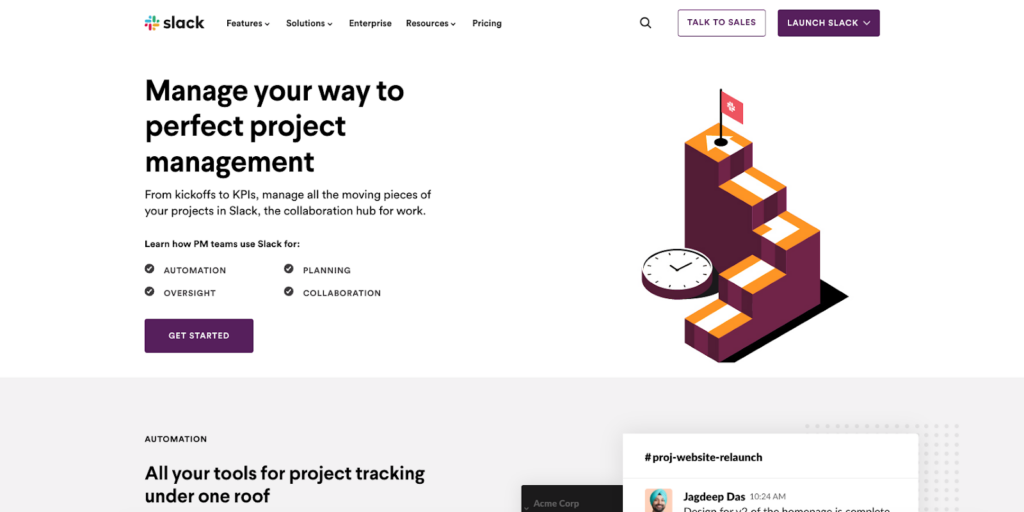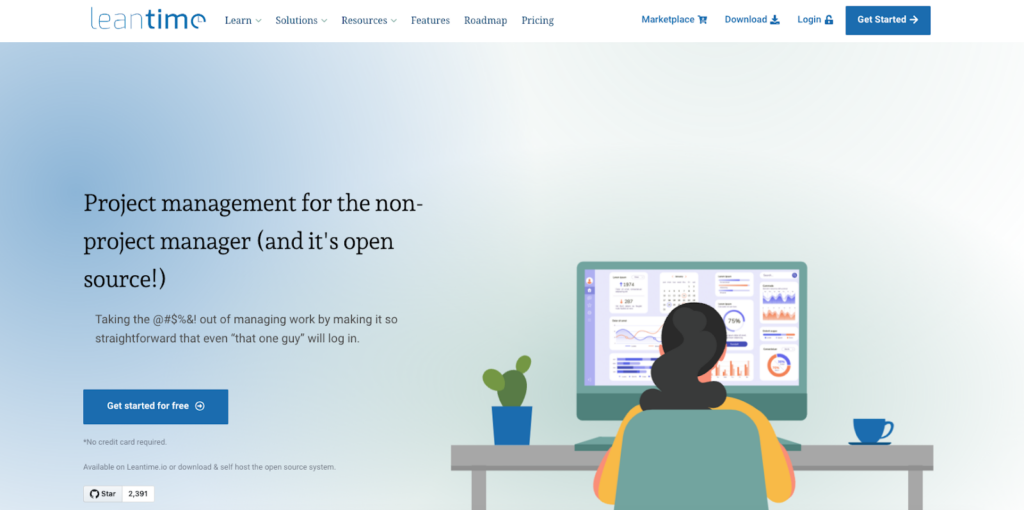Projects are the lifeblood of any company or organization, and many of our plans and aspirations depend on their success. However, some plans fail despite our best intentions and rigorous planning efforts.
One survey by the Project Management Institute showed that project management deemed 35% of their projects a failure with budget loss. Naturally, we want to avoid failure because it costs precious time, effort, and resources and brings little to no return.
To avoid failure, project managers and stakeholders must ask, “Why do projects fail?” In this article, we’ll look at why projects fail and pinpoint action steps companies must take to avoid failure.
Table of contents
What is Project Management?
First, let’s understand what project management is. This process involves planning, executing, and controlling projects to meet our goals and objectives. Simply put, we use project management to ensure project success.
Effective project management helps your company or institution increase productivity and eliminate waste connected with project failure. It involves setting realistic project objectives, building project teams, and setting deliverables.
While anyone can do project management, not everyone will do so in a way that ensures success. And if we want our businesses or organizations to move forward, we need to find a way to increase our chances of project success.
Why is Project Management Important?
So why is project management important? Here are some benefits to effective project management:
- It sets clearer goals and objectives
- It helps us allocate resources accordingly
- It makes the best use of your project team members’ valuable time
- It improves the quality of individual and collective work
- It enables companies to change and stay on track
- It helps control budget and expenses
- It improves customer satisfaction
- It helps the organization become more profitable
These are just some of the many ways that project management improves the workplace or company. And if you want to enjoy all of these benefits, you must ensure you don’t end up with a failed project.
3 Typs of Project Management
Different approaches and methodologies exist to tackle projects based on their specific characteristics, requirements, and goals. Among the multitude of methodologies available, these three prominent types stand out:
Agile
Agile methodology is a flexible, iterative approach that focuses on adaptability and collaboration. This management style works best for projects with evolving requirements, uncertain environments, or rapidly changing markets.
When to Use Agile:
- Software development
- Marketing campaigns
- Product prototyping
- Research and development
Waterfall
Waterfall methodology is a sequential approach where each project phase follows a linear path, and progress flows top-down.
Waterfall projects progress through distinct phases: requirements, design, implementation, testing, deployment, and maintenance. Each phase produces documentation that guides subsequent phases, ensuring a structured approach.
When to Use Waterfall:
- Construction
- Manufacturing
- Regulatory compliance
- Infrastructure development
Lean
Lean project management comes from manufacturing principles that aim to eliminate waste, improve efficiency, and use the least possible resources. It focuses on optimizing processes to ensure every action helps your objective.
Lean project management emphasizes continuous improvement and customer-centricity, aligning well with the principles of agility and adaptability.
When to Use Lean:
- Startups and product development
- Supply chain management
- Construction
- Retail and inventory management
- Education
Project Failure: Should I Embrace It?
To many, it might seem impossible to avoid project failure. Others might have resorted to openly embracing them and adjusting accordingly. While it’s true that mistakes and problems will arise unwantedly, there are ways to control failure rates.
So, while you must embrace that your projects will not always go according to plan, companies and teams shouldn’t embrace failure. You should find means and ways to avoid and mitigate failure and pursue smoother project progress.
More importantly, avoiding failure in the grand scheme is highly possible. You will have ups and downs, but your projects can ultimately succeed. But it starts by understanding why they fail in the first place.
7 Common Reasons Why Projects Fail
The first step to solving a project management issue is knowing why the project failed in the first place. What are the common reasons why many project managers and projects fail?
Take a look at these common reasons for project failure:
1. Lack of Clear Direction
As the old proverb says, “Where there is no vision, the people perish.” Good project management starts by setting the right tone and direction for every team member. This will help set everyone up for success.
To give direction, you will need:
- Realistic and measurable objectives
- A clear project scope
- Detailed descriptions of every member’s job role
When you have a poorly defined project scope or vision, your team will have no way of indicating they’re on track.
Related Blog: 10 Ways on How to Be Better at Project Management
Picture riding a taxi and not telling the driver where you want to go. In the same way, a project plan must have a direction for you to end up with a successful project.
2. Unrealistic Goals and Expectations
In some cases, failures in project management happen because of a lack of unrealistic goals and expectations. There’s a vision or goal is in place, but they’re too high up in the clouds.
In most cases, failed planning will inadvertently lead to failed execution. Projects with unrealistic expectations will lead to poor timeline planning, faulty risk management, and demoralized teams.
Take, for example, failed software projects that included too many features in the beta version. Overstacking your product with capabilities can burn through your funding.
Ultimately, you’ll have overwhelmed product teams and an unfinished product. In other cases, you might successfully launch software only to have it fall apart because users ignore most features.
A better approach would be to predetermine non-negotiable features first, launch a minimum viable product, and add features if users request them.
Project managers who set realistic project goals and expectations will avoid these unwanted circumstances.
Study other projects and understand what it took to make the project successful. Mimic their timelines and coordinate with stakeholders to ensure that your calendar, budgets, and work scopes remain realistic.
3. No Project Management Systems in Place
Only 23% of companies today use software that helps with project management. This lack of systems and processes creates bottlenecks and loopholes that cost your projects significant time and energy.
So many projects today lack project management software to keep track of the project schedule, project deliverables, and project goals. This lack of documentation leads to poor communication and misunderstanding.
4. Inaccurate Cost and Time Estimates
One of the other main reasons projects fail is a poor estimate of the time and resources needed to complete a project.
Consider how a construction team might run out of funds and time to complete a renovation or build because of poor resource management. Successful projects set realistic cost and time estimates.
Determine all the resources you need before starting a project. Do you need tools to complete tasks? What kind of office space will your staff need? Do you need built-in communication channels in your project planning software?
Much of this comes with experience and research. You can also create better estimates by talking to stakeholders and teams to clarify how long it would take and how much it would cost to complete project tasks.
5. Poor Risk Management
When running projects, you always have to operate under the assumption that things will not always go according to plan. Many project failures are a result of poor risk management.
Some examples of what poor risk management might look like include:
- Scope creep (uncontrolled changes in project scope) that cause the project to deviate from its original objectives
- A lack of proper contingency plans for unexpected events
- Assuming that everything will go smoothly
- Failing to account for potential resource constraints or price increases
- Failing to communicate potential risks to teams
- No risk ownership, leading to unaddressed issues and blurred accountabilities
- Neglecting ongoing risk monitoring
- Missing out on major expenses during resource planning
- Failing to evaluate past mistakes before moving to the next project
6. Inadequate Monitoring and Control
Setting a project plan in place and launching it are just the first steps to a new project. The real work begins with the implementation. One important role that project managers have is overall oversight of the project.
That oversight means that you have to monitor and control project outcomes. The team won’t work as a single unit when that doesn’t happen. This will lead to duplication of efforts, timeline gaps, and miscommunication.
7. Inexperienced Project Manager
Project management is a highly crucial job that requires experience and competence. When your project manager fails to keep timelines and maintain team collaboration, there’s a high chance your project will fall apart.
That’s why getting competitive project managers with proven success is important. It helps to get someone who understands the required tasks so they can manage the quality of your team’s output.
7 Ways to Mitigate Project Failure
Now that you know why most projects tend to fail, we can now look at ways to mitigate these failures. Here are the top seven strategies and tactics that help you mitigate failure and ensure success.
1. Set Clear Goals, Objectives, and Expectations
Many projects start without a goal or with poorly constructed objectives. You’ll need to ensure those are in place before you move forward.
When you have unclear objectives or goals, seek to clarify them first before moving forward. Be ready to delimit scopes and tasks that don’t contribute to the bigger goal of the project.
For IT projects, for example, understand what you want a certain technology or solution to achieve for your business. Don’t implement software and tools for the sake of having them. Be clear about their purpose and functions.
4. Be Realistic
For projects to succeed, they need to be realistic. This involves properly studying your timelines, budgets, goals, and objectives.
Break your tasks into smaller, more manageable phases to create better time and resource estimates. Consider the availability of your resources, suppliers, and partners to avoid delays.
Check for factors that could cause lags in your timeline, such as holidays, weather problems, or other projects that could overlap with your new plans.
Lastly, you should use historical data where available to understand better how long, how much, and how hard aspects of your project might be. All these steps will help you make your project more feasible.
3. Make Room for the Unexpected
We can avoid failed projects by creating room for unexpected and unplanned events. This includes weather changes, market fluctuations, price increases, staff illnesses, and other elements outside our control.
One of the best ways to avoid project management failures due to poor risk management is to create a margin in your timeline and budget. Always account for standard deviations in the time and resources needed to complete a task.
4. Keep Communication Open
One non-negotiable key to project success is clear and constant communication. Teams should always keep open lines and download changes, problems, issues, and completions to their teams and supervisors.

To keep your communication effective and open, follow some of these best practices:
- Provide detailed instructions for tasks and deliverables
- Set regular stand-up and weekly meetings to review timelines, deliverables, and projects
- Keep an asynchronous communication line with tools like Slack, Discord, or Microsoft Teams
- Regularly update task updates and changes in your project management system
- Encourage feedback loops to ensure output quality
- Communicate revisions and iterations systematically to streamline output improvements
- Provide training and tutorials where necessary, especially with new tools or methodologies
5. Build a Solid Project Team
A cohesive project team with diverse skill sets, relevant experience, and a shared sense of purpose can lay the groundwork for project success. Your members should have technical expertise as well as strong collaboration skills.
Consider each member’s strengths and weaknesses, and assign roles that align with their abilities. This promotes a sense of ownership and accountability.
Additionally, it fosters an environment that encourages open dialogue and the exchange of ideas. If you have the space for it, create team-building activities to build rapport and establish a sense of camaraderie among team members.
6. Decide on a Project Framework
Project frameworks, such as the abovementioned types (Agile, Waterfall, and Lean), provide a structured roadmap for executing tasks, managing resources, and tracking progress.
It’s important to note that each framework has its strengths and weaknesses. Your choice should depend on the project’s nature and the team’s familiarity with the approach.
An Agile methodology, for example, will better suit projects with rapidly changing requirements, emphasizing iterative development and close customer collaboration. The Waterfall model will work for projects with well-defined requirements.
7. Use the Right Tool for the Job
There is no shortage of tools and technologies to streamline processes, enhance communication, and facilitate collaboration. Selecting the right tools for your project can significantly influence its outcome.
Equipping the right team with a clear methodology and the best tools will help ensure your project’s success. Without the right tools, even the best teams will struggle to make a project succeed.
Good project management software is one of your most crucial tools. That’s where Leantime.io comes in handy.
The project management software gives you access to several features that will help you avoid project failure. Some of the most notable include:
- Client role management systems
- Embeddable docs and wikis
- Calendar integrations
- Status reports, dashboards, and team retrospectives
- File management platform
- A customizable open-source system via API

Click here to try out Leantime.
Sometimes, for example, the failure of IT projects happens because of the lack of necessary hardware or software to complete deliverables. Other tools your team might need include:
- Communication platforms
- Version control systems
- Customer facing Issue tracking tools
- Expense and finance management tools
Consider factors such as the team’s familiarity with the technology, scalability, integration capabilities, and the project’s specific needs.
Final Thoughts
Great project management hinges on our understanding of the reasons behind project failures and becomes a compass guiding us toward success. Understanding these root causes will help you unearth valuable lessons and strategies.
Which reasons for project failure do you need to avoid most today? Which strategies can you use to mitigate it?
Keep in mind that project management will always have challenges and uncertainties. Still, we can navigate pitfalls and bolster our projects against failure. With each project that defies the odds, we rewrite the narrative of success.
Other articles you may be interested in:



